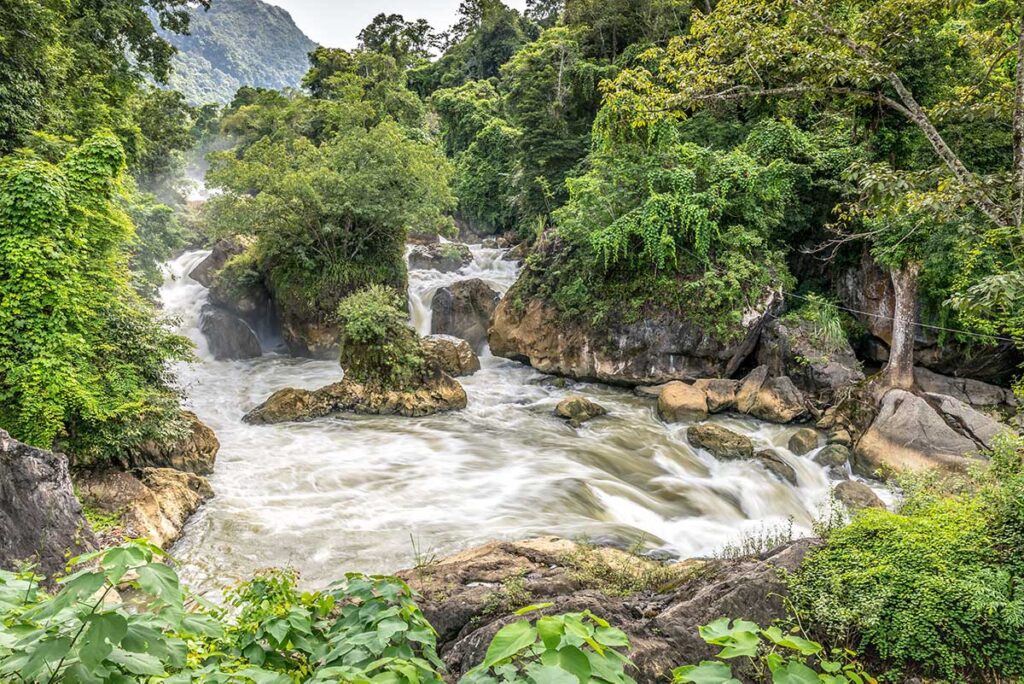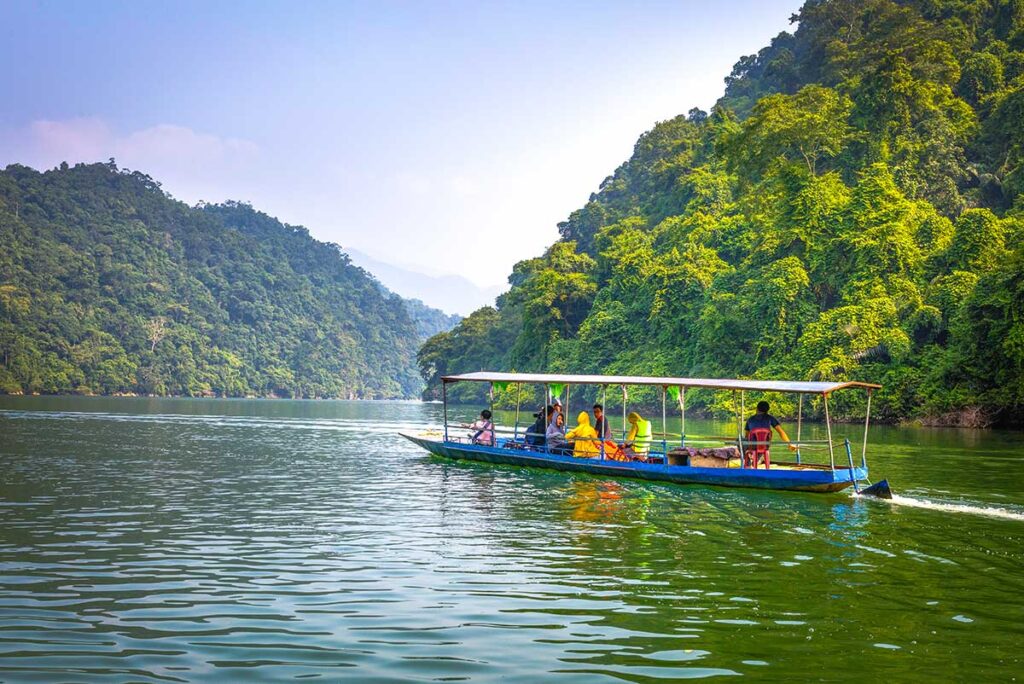What is Dau Dang Waterfall like?
A River waterfall carved through limestone
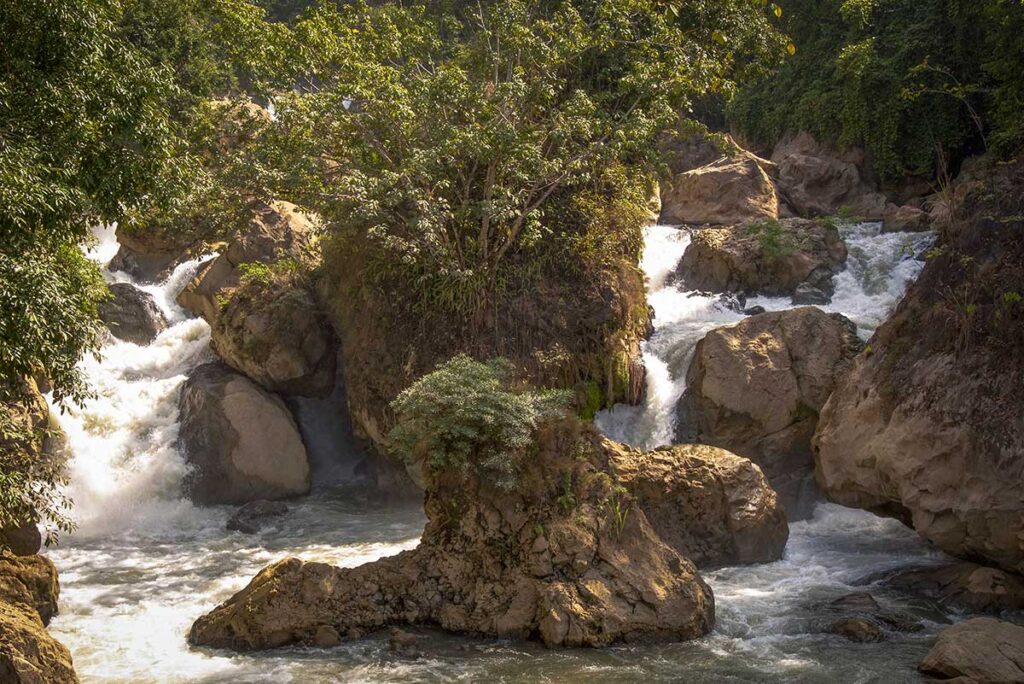
At the western edge of Ba Be National Park, the Nang River crashes through a field of giant limestone boulders, creating a long and dramatic cascade.
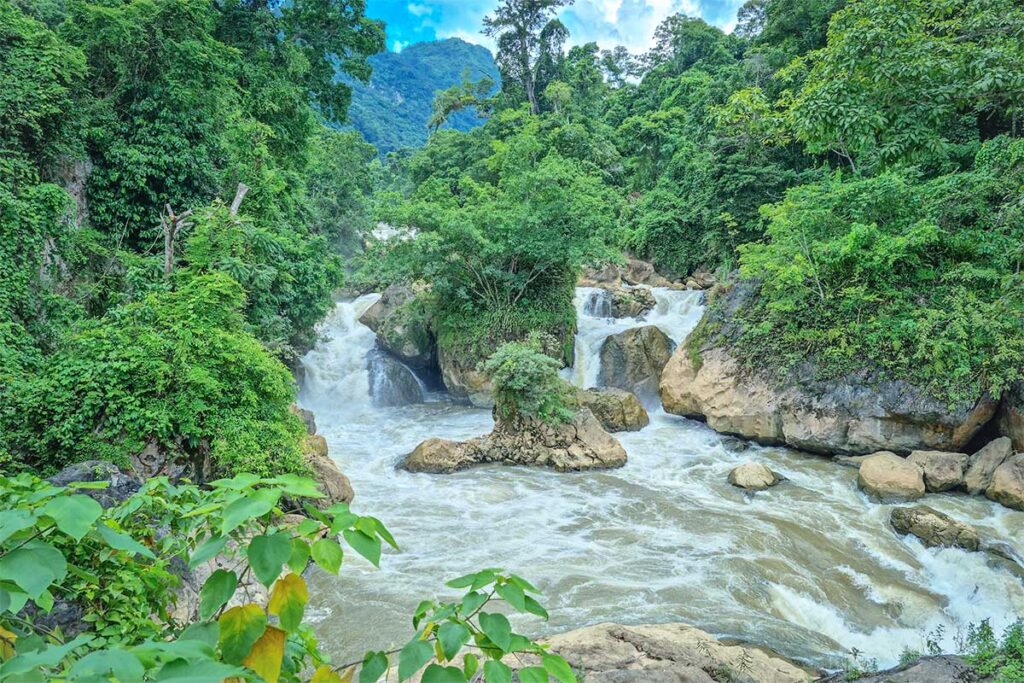
Unlike a single vertical drop, Dau Dang is a powerful river gorge, where water rushes down a natural 500-meter slope between steep forested cliffs. The effect is loud and chaotic in some sections, smooth and misty in others. Surrounded by jungle and towering rocks, it feels both wild and tucked away—especially compared to more accessible waterfalls elsewhere in Vietnam.
Where you can view the waterfall
After a short walk from the boat landing, you’ll reach several viewpoints near the waterfall. There are wooden balconies, large flat rocks, and informal side paths that let you get different angles of the rushing water. Some platforms are a bit high and not ideal for photos, but others allow you to stand closer to the action. In the rainy season, the sound can be thunderous and the current fierce. Swimming is strictly forbidden here—metal railings mark off the danger zones for safety.
How to get there
Tip: Combine Dau Dang Waterfall with a full Ba Be tour
You can reach Dau Dang by boat during one of our Ba Be tours, which also include Hanoi transfers, Puong Cave, trekking, and other activities around the lake.
Getting to Ba Be Lake
To visit Dau Dang Waterfall, you’ll first need to reach Ba Be Lake in Bac Kan Province. From Hanoi, the journey takes around 5 to 6 hours depending on your choice of transport. You can take a local bus from My Dinh Station, hire a private car with driver, or go by motorbike if you’re comfortable navigating Vietnam’s rural roads. For a full breakdown of routes and travel options, check our guide: How to get to Ba Be National Park from Hanoi.
By Boat – The most common way
Once you’re in Ba Be National Park, most travelers stay in or around Pac Ngoi or Bo Lu village, the main area for homestays and accommodations. From here, the best way to reach Dau Dang Waterfall is by joining a boat trip across Ba Be Lake. This boat tour is the park’s most popular activity and usually follows a scenic route that includes An Ma Temple, Puong Cave, and a stop near Dau Dang Waterfall. The boat cruise takes you past scenic cliffs, floating houses, and through Puong Cave, before reaching a small riverside village near the falls. This stretch takes about 45 to 60 minutes by boat, and is a highlight of the Ba Be experience in itself.
The Walk to the Falls
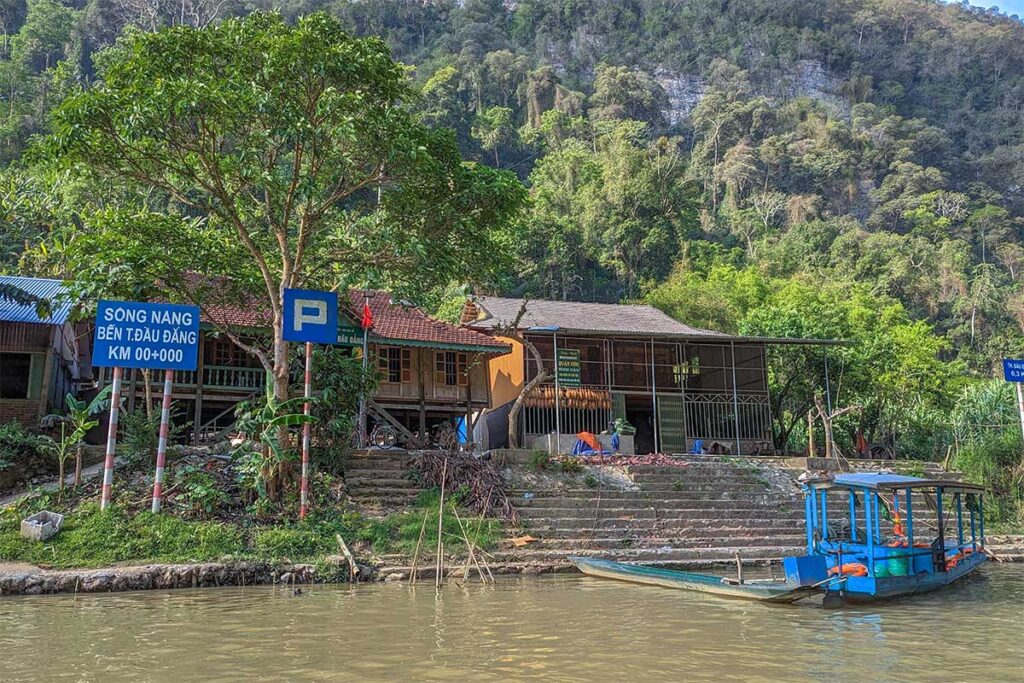
After disembarking, it’s a short 500 to 700-meter walk to reach the waterfall. The trail is mostly flat, with a mix of dirt path and concrete sections, passing through light jungle and local homes.
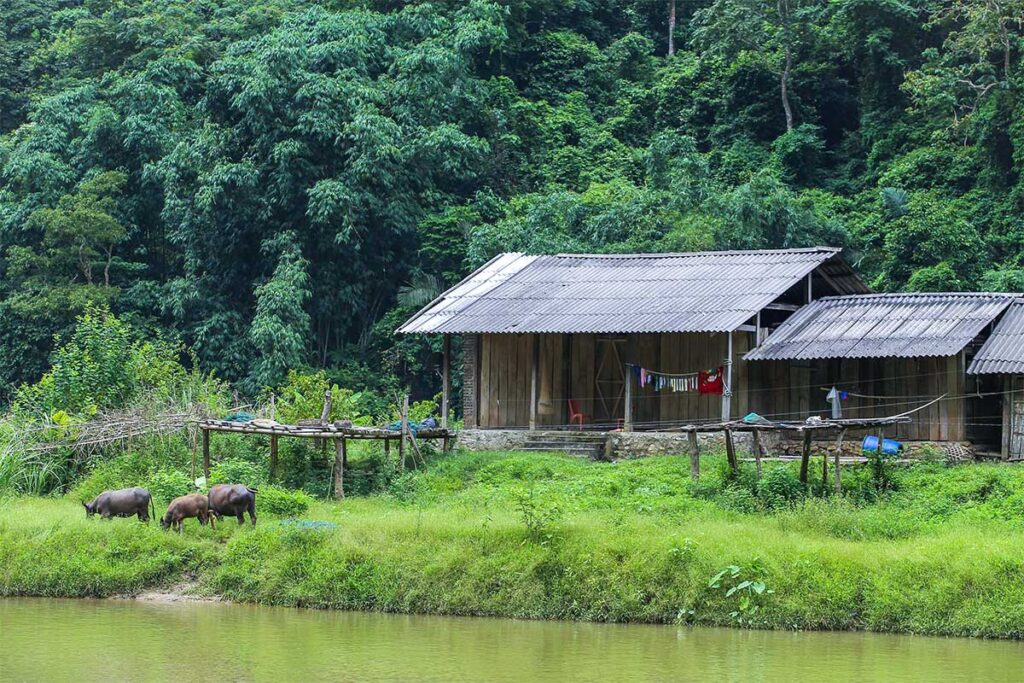
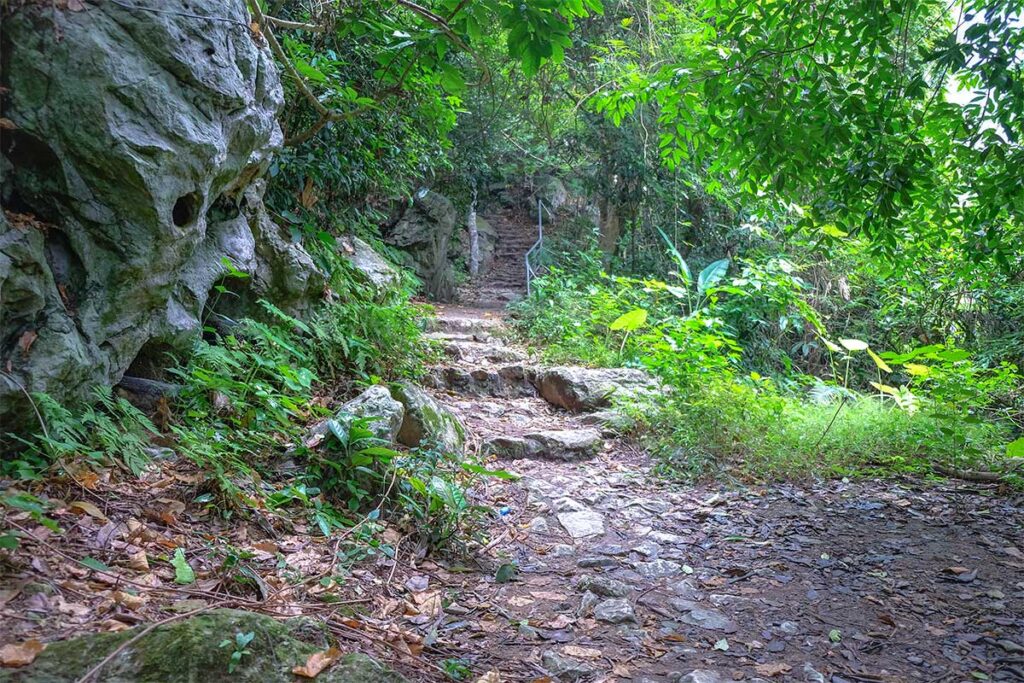
It’s a peaceful stretch—easy to follow, though it can be muddy or slippery during the rainy season. Along the way, you’ll pass a few basic drink stalls and shaded resting spots before arriving at the main viewing areas.
Facilities & Swimming restrictions
Don’t expect much in terms of infrastructure near Dau Dang Waterfall. There are just a couple of small drink stalls or local eateries near the start of the walking trail, but no shops, no proper bathrooms, and no formal tourist services. Part of the charm here is the remote, undeveloped feel—you’re surrounded by forest, river, and rock, not crowds or concrete.
Swimming is strictly prohibited, and for good reason. The water flow is fast and unpredictable, especially during and after the rainy season. You’ll see metal railings and warning signs around the main viewing areas to prevent visitors from getting too close to the edge. It’s best to enjoy the scenery from a safe distance.
Best time to visit Dau Dang Waterfall
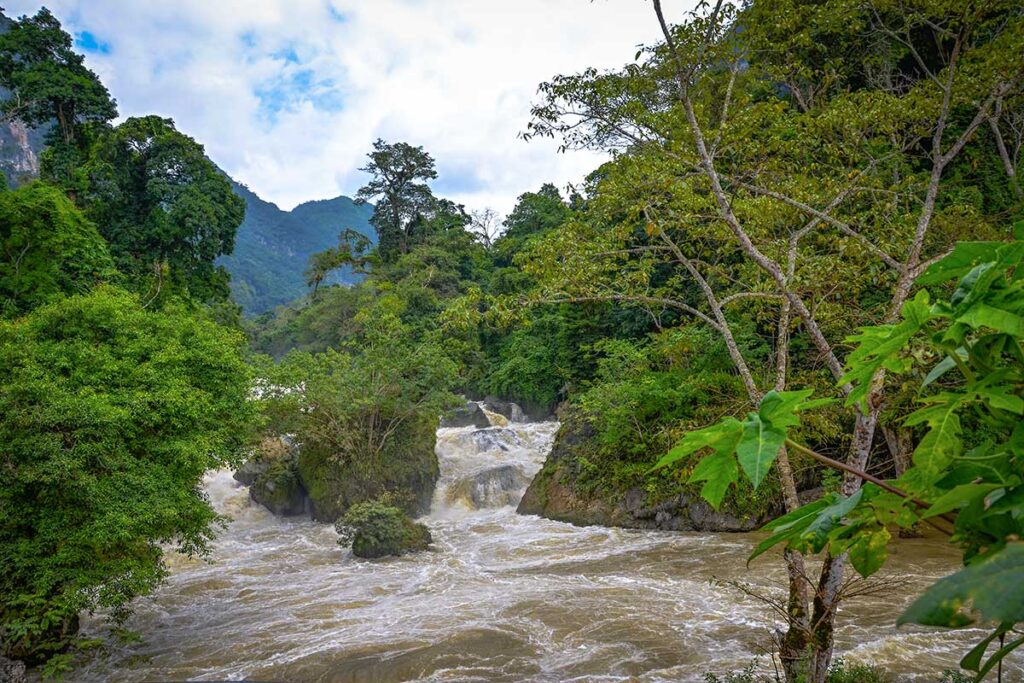
The waterfall flows year-round, but its appearance and surroundings change noticeably with the seasons:
- Summer (May–August):
This is when the flow is strongest, especially after rain. However, the water is often muddy or brown due to runoff from upstream. Trails can also be wet and slippery. - Autumn (September–November):
A great time to visit. The water is still powerful but tends to be clearer and more photogenic. The weather is pleasant, and the forest around the waterfall is lush. - Winter (December–February):
The waterfall’s volume drops slightly, but there’s still a steady flow. It’s cooler and drier, making the trail easier to walk, especially for those who prefer milder temperatures. - Spring (March–April):
Usually the lowest water levels of the year, but the waterfall doesn’t dry out. Still a good time to visit—especially if you’re combining it with Puong Cave or local villages.
Is Dau Dang Waterfall worth a visit?
Yes—especially as part of a full boat trip on Ba Be Lake. While it’s not the most dramatic or tallest waterfall in Vietnam, the overall journey makes it a worthwhile and enjoyable stop. The combination of a peaceful boat ride, a short forest walk, and the sight of the river crashing through boulders creates a natural, unspoiled experience. It’s also a good place to stretch your legs, take in the jungle scenery, and enjoy a quieter part of the park. Plus, it pairs perfectly with nearby highlights like Puong Cave, Pac Ngoi village, and local grilled fish from the Nang River.
